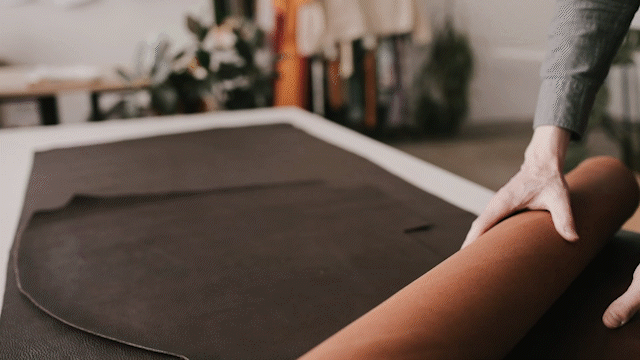
#goconscious
Our goal from the beginning has been a constant commitment to promoting awareness and a product culture by choosing materials that come from production cycles that respect environmental sustainability.
Our 'WHY'
-
Goal 1: Awareness & Product Culture
Our goal from the beginning has been a constant commitment to promoting awareness and a product culture by choosing materials that come from production cycles that respect environmental sustainability.
-
Goal 2: Gender Equality
Because we are convinced that companies have a role to play in society, we support projects, associations that help to make our societies a better place.
Explore the Giving Back section to read more about our projects. -
Goal 3: Embracing the Circular Economy
We're committed to reducing waste. That's why we value the life cycle of our products. Because our products deserve to last and to have several lives, we offer a product care, repair service and products made of soft, fine, Italian leather which derives exclusively from our collection's leftovers and scrap
Discover The Reborn Bijoux Collection

Goal 1: Product Culture
The majority of our collections are made from vegetable tanned leather.
We carefully choose sustainable leathers from Italian suppliers certified by the Leather Working Group who guarantee compliance with European regulations on quality standards and principles of eco-sustainability.
Choosing these products allows you to have a direct positive impact on the preservation of the environment, improved biodiversity, or reduced greenhouse gas emissions.
Vegetal Tanned Leather
In The Spotlight
Craftsmanship
Vegetable tanning is the most environmentally-friendly method of leather production. It doesn’t submit chemical and harmful treatments, it keeps its natural features which include also variations of color nuances in veining. These variations don’t constitute a leather defect instead make each bag unique just like its bearer.
Benefits
Part of the reason why vegetable tanned leather carries a higher price tag is that it takes longer to produce than other types of leather (up to two months). It is important to factor in other considerations, such as the superior quality, longevity and aesthetic of vegetable tanned leather.
Aside from durability, the vegetable tanning process also gives leather a distinct, somewhat sweet aroma — the kind you probably already associate with leather. And the absorption of tannins makes for colours that are notably rich and deep in character; think natural and earthy tones, like beige and brown.
Product care
Like all natural materials, leather reacts to the atmosphere.
🌿 Humidity rain and sunlight can damage leather.
🌿 Should a slight white coating appear on surface of leather, it can easily be removed using a dry cloth.
🌿 Should the leather get wet please absorb the water immediately with a dry cloth.
🌿 Overexposure to sunlight can stain or alter the color of the leather.
Join our community on Instagram to discover more care guide tips
